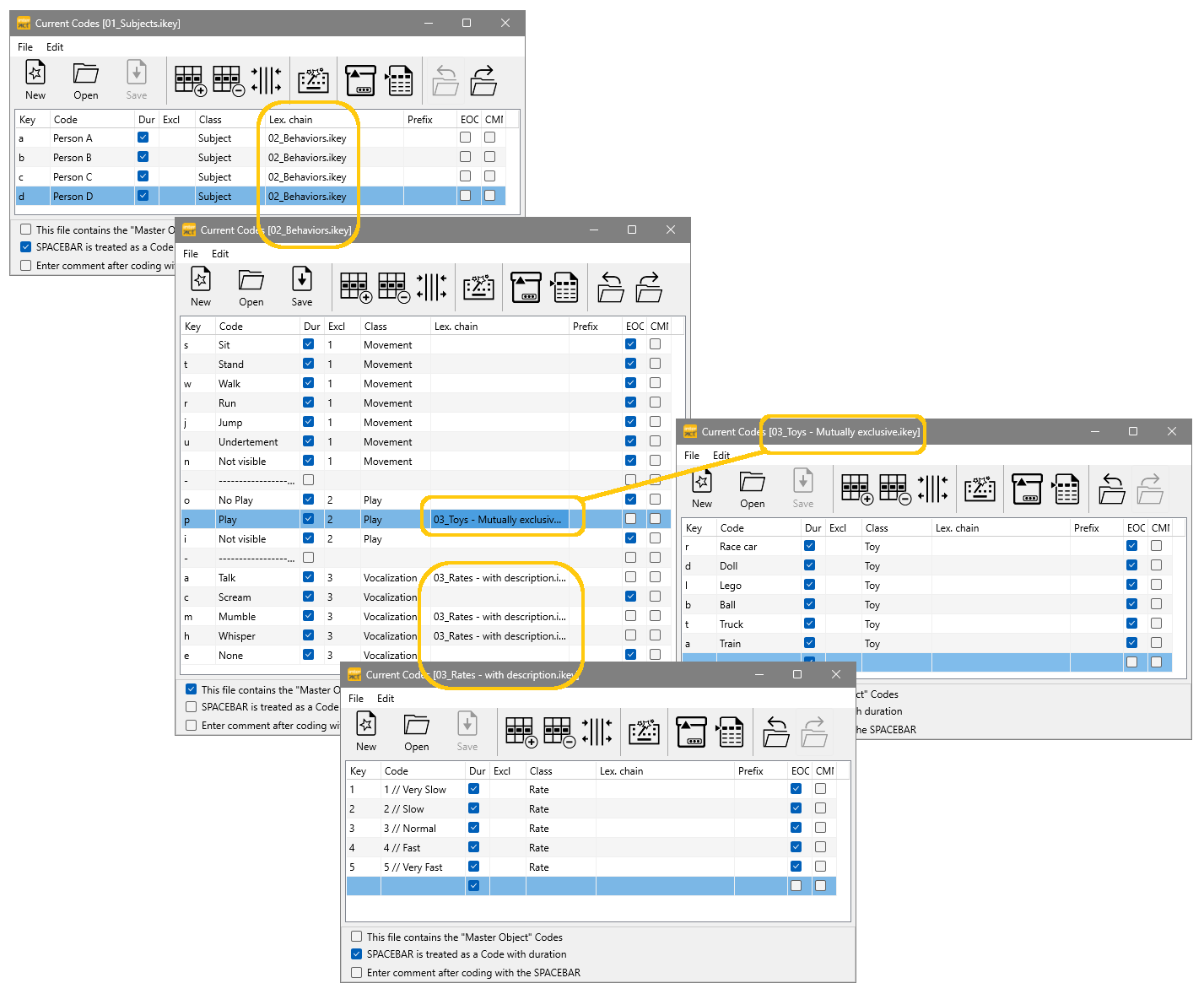INTERACT does technically not distinguish between Subjects, Behavior and Modifiers. All information is collected by Codes that are inserted into as many Classes as you need.
If required, you can create a Class named 'Subjects', but you would also create a Class for each Behavior-Group, resulting in Class names describing their content, like 'Activity', 'Vocalization', 'Gaze', 'Position' and so on...
In the Subject-Behavior-Modifier system, the so-called Modifier further specifies a Behavior.
In INTERACT, both the Behavior within its Class and its Modifier in a different Class are called Codes.
For the Behaviors, the Class is named after the Behavior-Group; for Modifiers, the Class is usually named after the Behavior Code it is modifying.
For example, the activity 'walking slowly' would be described by a Code 'Walk' assigned to the Class 'Activity' and its modifier 'Slow' can be entered into a Class 'Walk'. To link Modifiers to their Codes, both are best stored in separate Code Definition files and then linked using a Lexical Chain reference.
Building lexical chains between different Code Definitions allows you to implement exactly the same scenario of Subjects, Behavior and Modifier but with INTERACT you are not bound to just those 3 'levels' and you are free to name each 'level' to your liking. You can add as many modifiers of modifiers or other type of sub-levels as you need.
Allowing you to implement very complicated, hierarchical structures of Codes and sub-Codes if need be.
A one-on-one implementation of a basic Subject - Behavior - Modifier setup as known in other programs would look like this in INTERACT:
Behaviors with 'Modifiers', have a Lexical Chain link to the separate Code Definition file holding these modifier Codes.
Better, more INTERACT-like implementations are described in the Best-Practice Example Setups section of this documentation.
Note: A Coding System can be anything from one, two or three expressions (Codes) in a simple flat file up to a complex structure of multiple Code Definition files linked as Lexical Chains, including Prefixes and Circle-references. There is no technical limitation to the number of levels.
